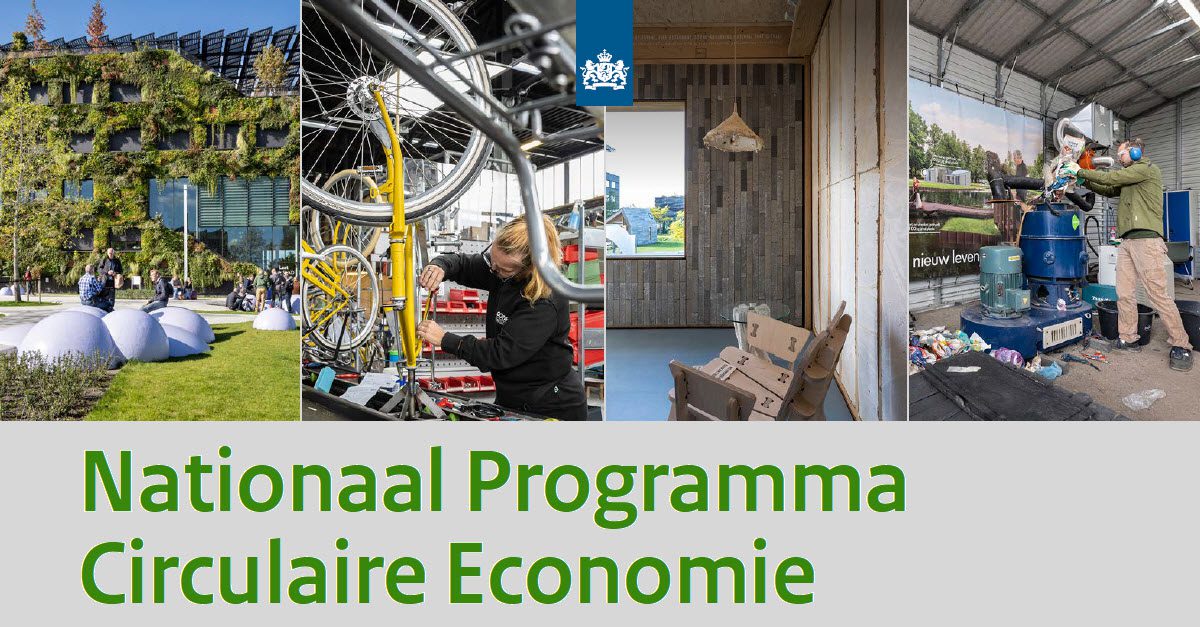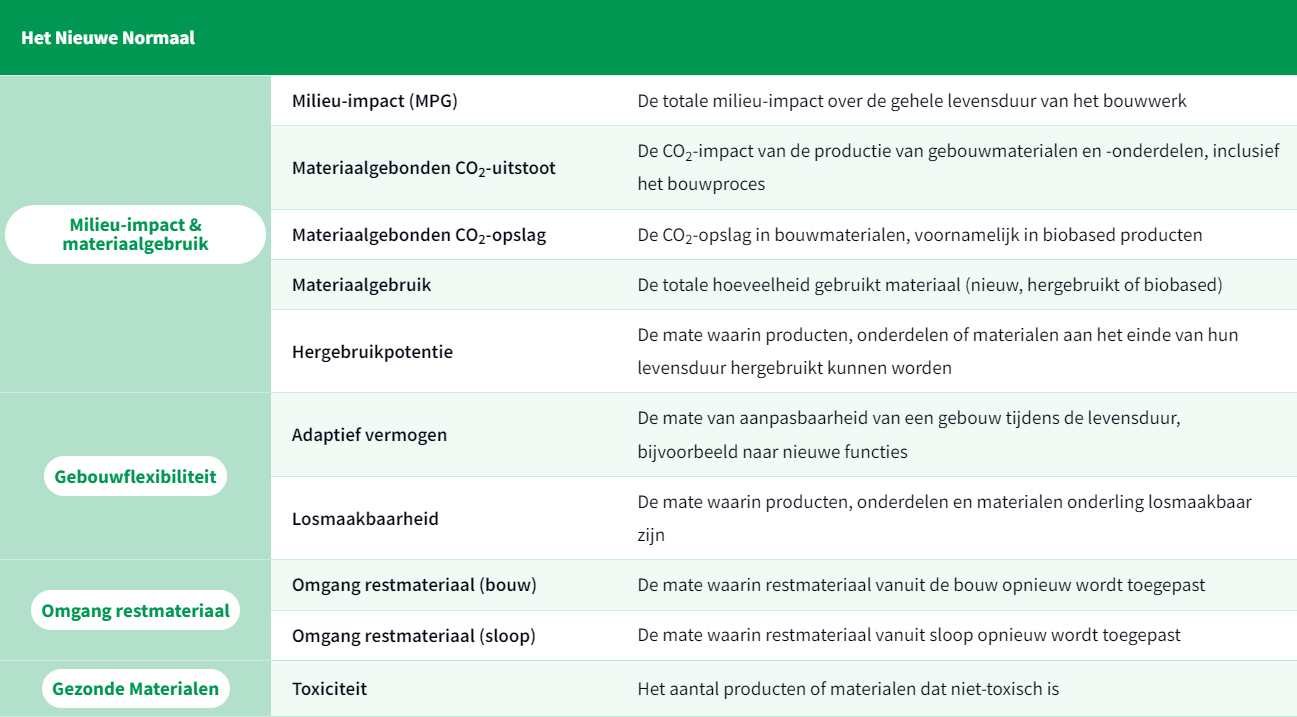Legislation & Guidelines
Every building is a collection of products: bricks, window frames, glass, roof tiles, solar panels, and so on. All of these products are made from raw materials. The extraction, transportation, and processing of these materials into construction products causes significant environmental impact. Construction products alone are responsible for as much as 11% of national CO₂ (carbon) emissions.
Despite this, the demand for buildings remains high. This means construction must become more conscious and future-proof. Both nationally and internationally, rules and guidelines are in place for sustainable construction (Note: images contain Dutch content. English version is under construction).
Legislation NL: MPG in the Dutch Building Decree
The Environmental Performance of Buildings (MPG) provides insight into the environmental impact of a building, based on the Life Cycle Assessments (LCAs) of its components. These LCAs evaluate environmental impact across 11 categories (based on A1 data), showing how ‘good’ or ‘bad’ a product is for the environment. The goal is to achieve the lowest possible CO₂ impact per building, which means aiming for a low MPG. This involves carefully selecting building materials.
New residential buildings and large office buildings (over 100 m²) must comply with an MPG threshold of 0.5 or lower, based on the National Environmental Database A1 dataset. This standard will be adjusted when the A2 dataset becomes mandatory, which assesses materials across more environmental impact categories than the A1 dataset. However, no official implementation date has been announced yet. Currently, there are no legal requirements related to circularity or material-based CO₂ performance.
The limited formal legislation does not mean there is no guidance on responsible material use in construction. Criteria like the percentage of bio-based materials, disassembly potential, or the BCI index score are often included in technical specifications or tender evaluation criteria.
Legislation EU: CSRD Reporting Obligation
On 31 July 2023, the European Commission adopted the Corporate Sustainability Reporting Directive (CSRD). The CSRD aims to improve the quality and transparency of sustainability data and support the transition to a sustainable economy in line with the EU Green Deal.
In the coming years, many companies will be required to report on their environmental and social impact, sustainability policies, and performance. For the first time, sustainability reporting will be placed on an equal footing with financial reporting.
In the Netherlands, thousands of organizations will need to comply with CSRD if they meet at least two of the following three criteria for two consecutive financial years:
- More than 250 employees
- More than €50 million in revenue
- More than €25 million in total assets
Even companies outside this scope will feel the effects of the CSRD. Reporting organizations will need to collect sustainability data from their suppliers and value chain partners. As a result, the CSRD will impact the entire (supply) chain.
The demand for sustainability data, especially around material use and circularity, is expected to grow significantly.
Reporting requirements are detailed in the European Sustainability Reporting Standards (ESRS). These standards outline what organizations must report regarding climate change, circularity, and employee-related matters, and how they should do so.
The ESRS aligns with the international ESG (Environmental, Social, Governance) reporting framework. There are five standards for environmental topics, three for social, and one for governance.
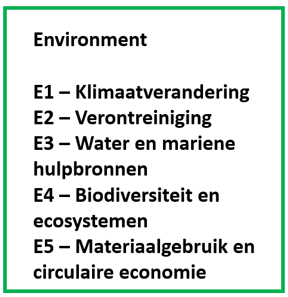
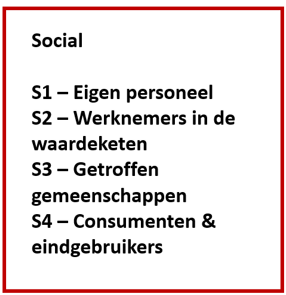
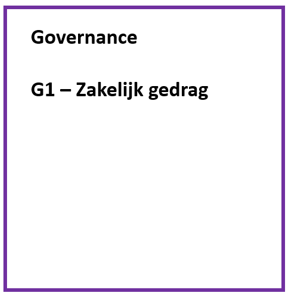
Organizations subject to CSRD must organize their data collection and verification processes to meet these extensive requirements.
BCI Gebouw supports reporting on ESRS datapoints under E1 and E5:
E1 Scope 3 emissions
Reporting on Scope 3 emissions in the value chain of construction materials, specifically Global Warming Potential (GWP).
E1-7
Mapping Construction Stored Carbon (CSC), or the stored CO₂ in building materials, including calculation assumptions and methodologies used.
E5-4
Total mass of materials used in projects, with breakdown by origin: virgin, renewable, recycled, or reused materials.
E5-5
End-of-life scenarios for materials and products, specifying reuse, recycling, incineration, or landfill.
Environmental Impact
BCI Gebouw also provides insight into 19 environmental impact categories. This allows organizations to identify significant environmental effects across their value chain. Based on this, strategies can be developed to reduce environmental impact.
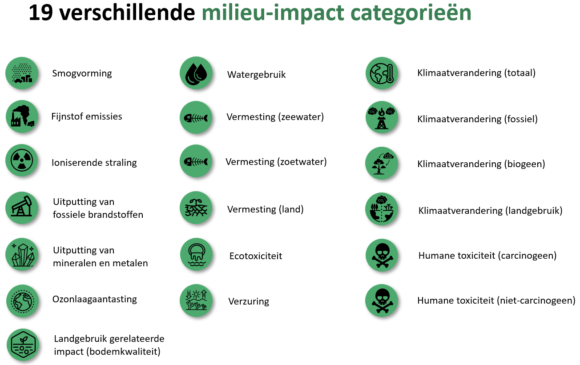
*Environmental performance assessments are based on the European standard EN 15804.
BCI Gebouw’s data forms a solid foundation for analyzing impact, risks, and opportunities in operations and for shaping material and circularity strategies. This includes reflecting on reported data and identifying improvement opportunities.
Reference: SER on EU Sustainability Reporting
Guideline NL: National Circular Economy Programme (NPCE) 2023–2030
In February 2023, the Dutch government published the NPCE 2023–2030 policy document. This shows the government’s strong focus on the transition from a linear to a circular economy. Although further elaboration is expected, the key goals are already clear:
- From 2023 onward, all government-funded construction must be executed as circular as possible.
- By 2050, all real estate in the Netherlands must be 100% circular.
- By 2030, we should be halfway there.
While the exact definition of circularity is still evolving, public tenders already focus on minimizing virgin material use and maximizing disassembly and reuse.
Guideline NL: Het Nieuwe Normaal
To accelerate the transition to a circular construction economy, the Netherlands Enterprise Agency (RVO), the Ministry of the Interior, and the municipalities of Amsterdam, Rotterdam, The Hague, and Utrecht joined forces with the six largest construction companies in the Netherlands under the Cirkelstad cooperative.
Together, they developed a manifesto that defines both qualitative and quantitative standards for circular construction. This framework is both achievable and ambitious and ensures a shared language around circular performance in the built environment.
Het Nieuwe Normaal is the benchmark for measuring circular performance in the Netherlands. The overview of indicators from Het Nieuwe Normaal is fully supported by BCI Gebouw, which is an official partner of Cirkelstad and Het Nieuwe Normaal. All quantitative indicators can be measured using BCI Gebouw.
International Guideline: BREEAM
BREEAM (Building Research Establishment Environmental Assessment Method) is used in over 80 countries worldwide. It was originally developed by the UK’s Building Research Establishment (BRE). The Dutch Green Building Council adapted the methodology for the Dutch context, resulting in BREEAM-NL.
BREEAM-NL is a certification method for a sustainably built environment. It allows projects to be assessed for integral sustainability. There are four labels under BREEAM-NL:
- New Construction and Renovation
- In-Use (for existing buildings)
- Demolition and Disassembly
- Area Development
